Best Wood For Dining Chairs
When choosing a solid-wood dining table there're many different things to consider, from what type of wood to choose, to the finish you should apply. This will completely depend on the look you're trying to achieve in your space, but with so many options out there it can be hard to know where to start. We've pulled together everything you should know before buying a wooden dining table to give you a helping hand.
Best Wood for Dining Tables
If you decide a solid-wood table is for you, then there's plenty of different varieties to consider based on the overall look you're trying to achieve.
Oak Tables
Oak is hard-wearing wood that is able to withstand constant use, and also has a timeless natural beauty that's hard to replicate. As Oak trees need a longer growth period, the wood tends to cost a lot more so it can be a more expensive option so it's certainly an investment. However, that slow growth also produces a dense wood, which means your table, when cared for properly, will be able to stand the test of time. There are also many different variations in the colour of Oak, from light to dark, so there are plenty of options when choosing a table that suits your interiors.
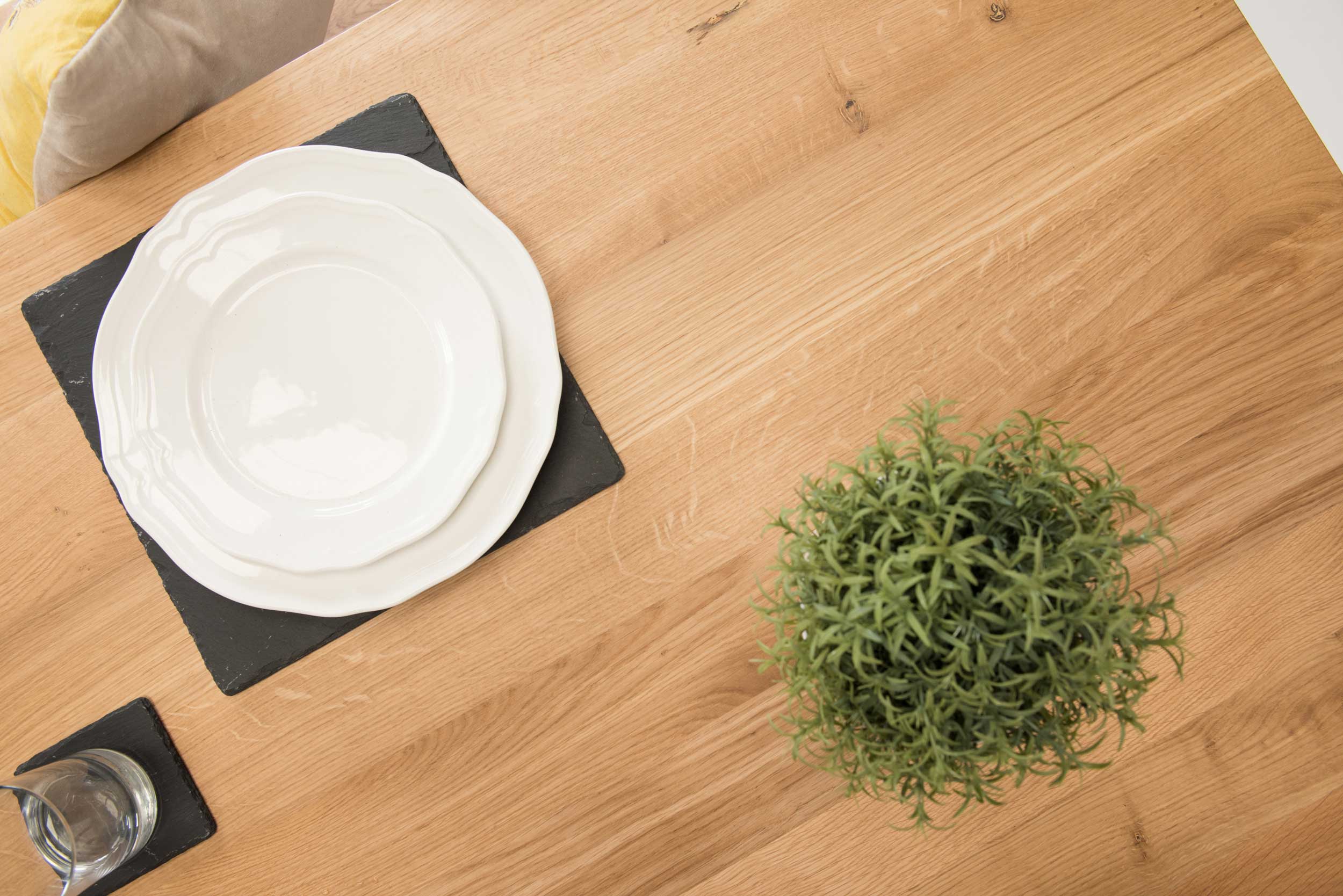
Natural Oak Dining Table Close Up, Image by Grain and Frame
Walnut Tables
Walnut wood stands out for its darker and bold look, with shades varying from light brown to dark chocolate brown. Walnut is renowned for being hard and dense which makes it perfect for a dining table. As one of the most sought-after woods available, Walnut can be slightly more expensive than its other solid-wood counterparts, however, it will certainly make your dining table a stand out feature in the home.
Pine Tables
Pine is a slighter softer wood which is light in colour, with varying shades ranging from creamy white to yellow. Whilst Pine generally tends to be cheaper, it's still hard-wearing and durable which makes it a great option for a dining table. Thanks to its light colour, Pine is also a great wood to stain which means you can easily achieve your desired colour to match your interiors. And, whilst it is a sturdy material, it's also lightweight which means you can easily move furniture around in the home.
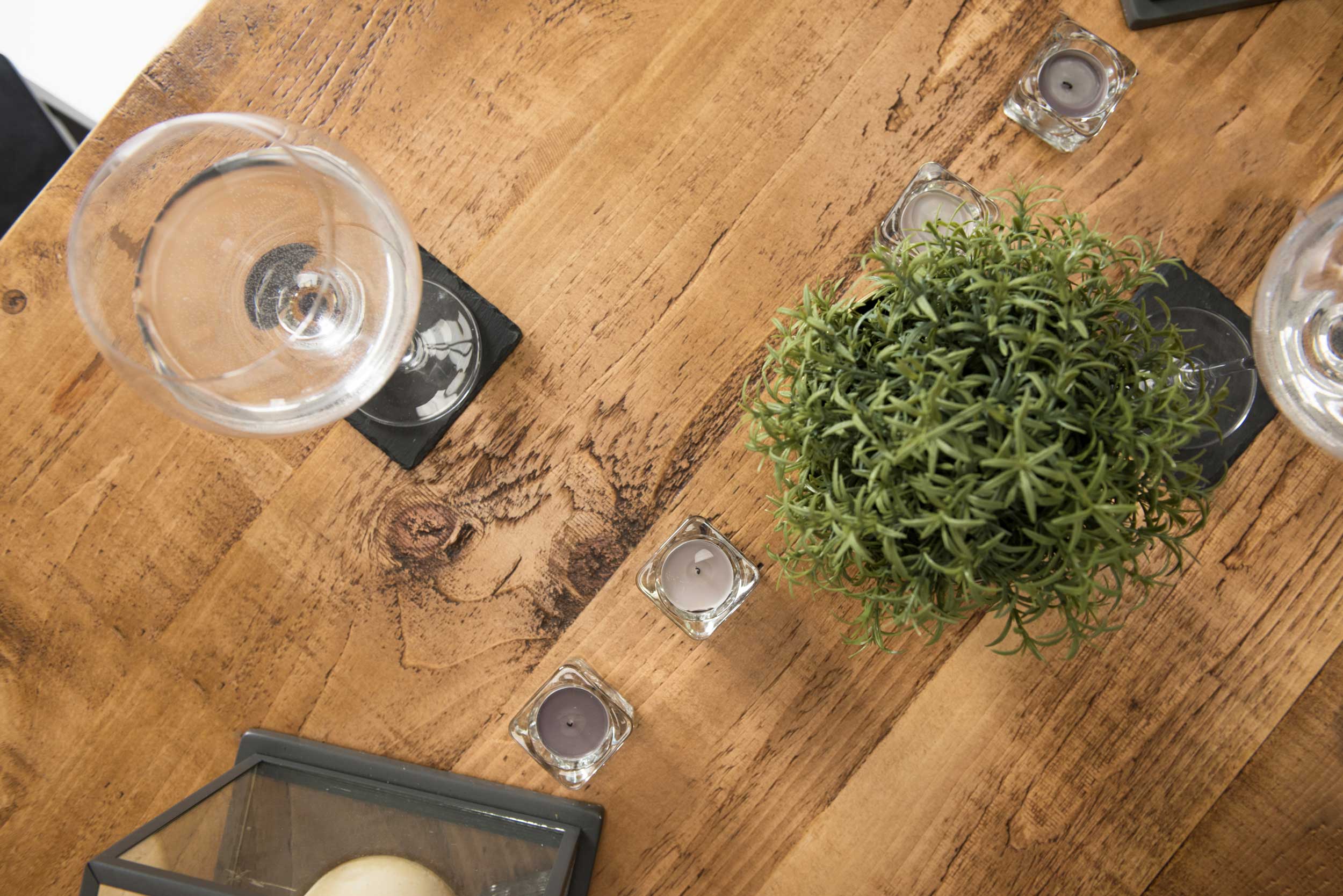
Industrial Pine Dining Table Close Up, Image by Grain and Frame
It's important to note that any wood table will require maintenance to ensure it is kept in top condition. And like with any solid-wood table, moisture can wreak havoc so it's important to clear up any spillages straight away and be sure to use coasters and placemats wherever possible.
Click here for a more detailed comparison on Pine Vs Oak.
Best Finish for Dining Tables
Once your dining table has been made, applying a finish is the last, and arguably the most important part of the furniture making process. Finishing is done by applying a special liquid to the wood surface, which then dries into a protective layer. Depending on what finish you opt for, it can also transform the appearance of the wood by highlighting or even changing its colour. There are several options when it comes to finishing wood, such as wax, oil or varnish, and each come with their own pros and cons.
Varnish
Varnish is a sticky liquid that, once dried, provides a hard, clear shiny surface on the wood. It cures extremely hard so it does a great job of sealing and protecting the wood from scuffs, stains, dirt and liquids. However, due to its hard-wearing nature, varnish forms a layer on top of the wood which means you can't feel the natural texture and grain of the wood which some may not like. If the table does get damaged over time there is little choice but to stand the table back to bare wood and re-varnish, however, it's likely this finish will last for many years and may never have to be refinished. That's why varnish is a great choice for those who are looking for a table that requires little maintenance.
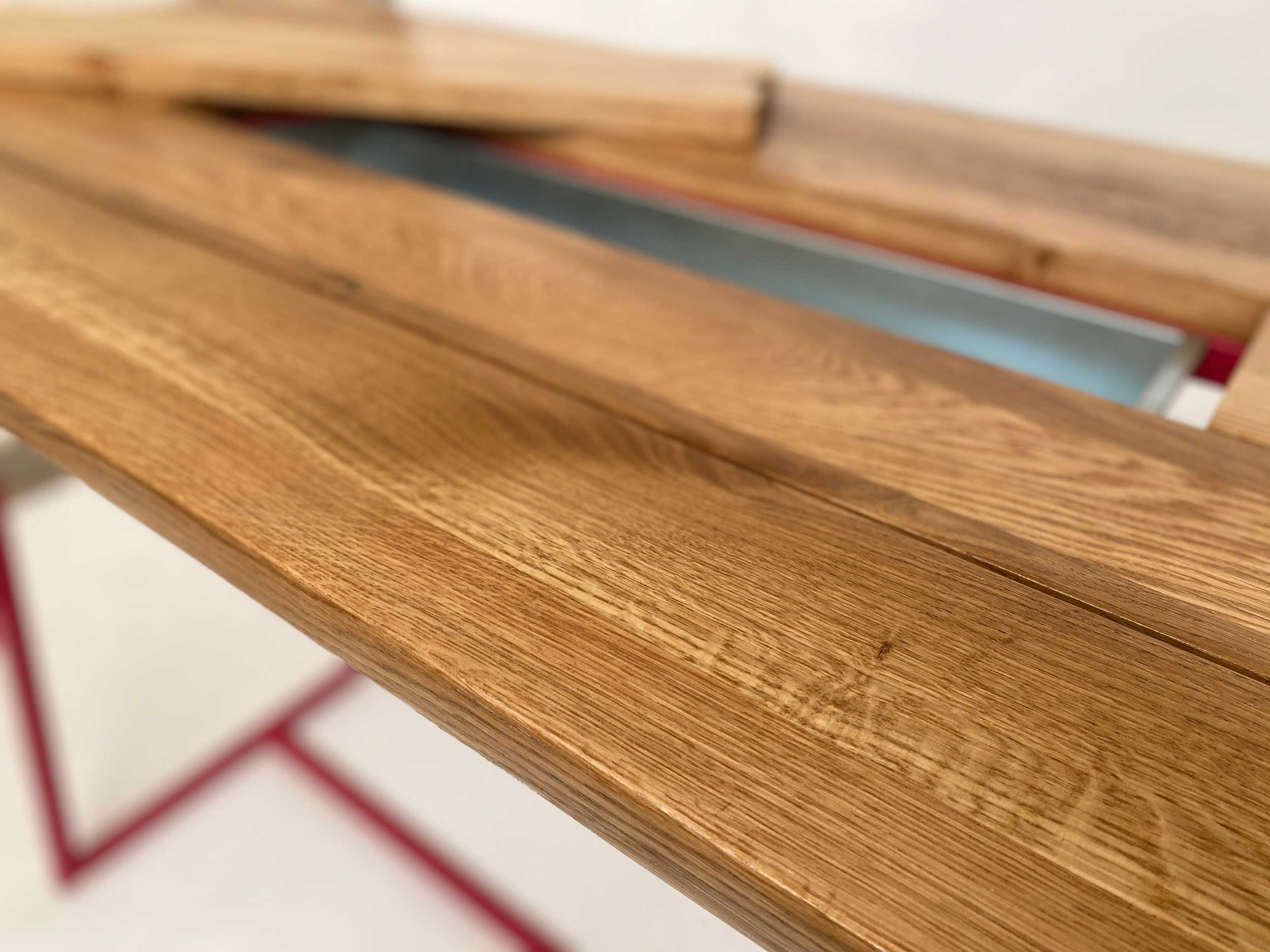
Natural Oak Bar Table Finished in Clear Varnish, Image by Grain and Frame
Wood Oil
Wood oils are also another option to consider when it comes to your table finish. They do a great job of protecting your table, whilst still maintaining the natural feel and texture of the wood. Wood oils are also great at enhancing the natural colour of the wood whilst protecting against spillages and general use. It's important to note that for tables with a wood oil finish, frequent reapplication is required, especially if the table is regularly used. However, the good news is this is fairly easy to do yourself at home – read our guide on maintaining your table here. Overall, wax oils are a great option for those who want to enhance the natural beauty of the wood, but they can start to fade and typically need topping up every 12 months, depending on usage.
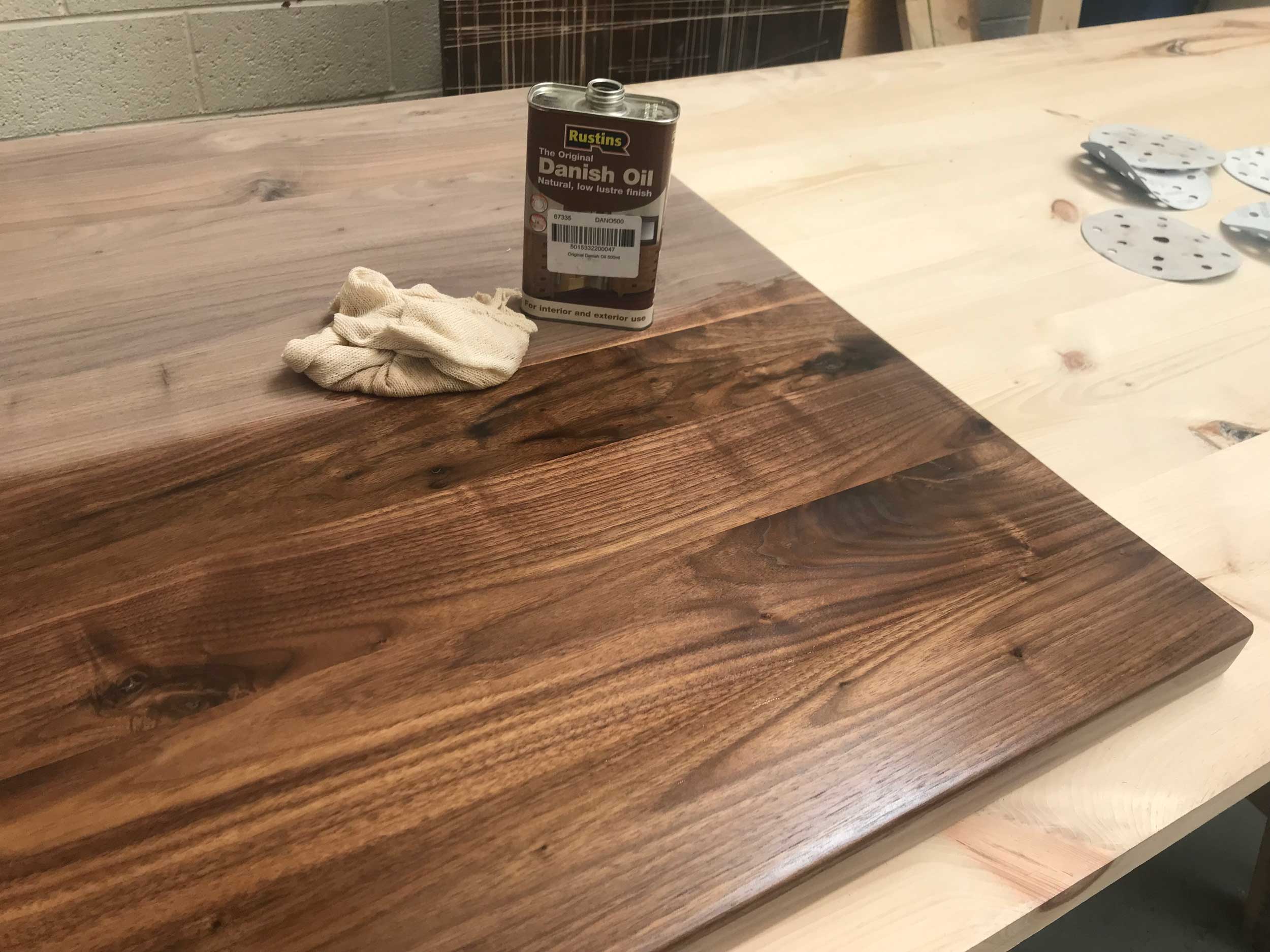
American Walnut Table Top Finished in Danish Oil, Image by Grain and Frame
Wax
Wax finishes have been around for centuries and for many years was seen as the 'go-to' finish for tables. Wax can really enhance the grain found in the wood and is especially great for filling in any voids in reclaimed wood. Tables that have been finished with wax can easily be repaired and maintained, however, this does require frequent re-application of the wax. Tables with a wax finish will require the most upkeep and will need to be waxed every 6 months to ensure the wood remains protected. Click here for our recommendations on the best wax to use on your wooden furniture.
Hard Wax Oil
A hard-wearing alternative to wax and oil, is hard wax oil. A blend of both solid waxes and oil, hard wax oils are extremely tough and offer a more durable finish than wax or oil alone. This finish is very easy to apply, maintain, and importantly, repair if areas of the table become worn over time. Similar to oil, hard wax oil also maintains the natural look and feel of the wood, whilst providing a more durable barrier. As this finish is slightly more hardwearing, it can last up to 12 months before the finish needs re-applying.
The great thing about purchasing a solid wood dining table is that it's easy to refinish. Over time your table may start to look a little worn and a great way to give it a new lease of life is to refinish the tabletop – read more about resurfacing your tabletop here.
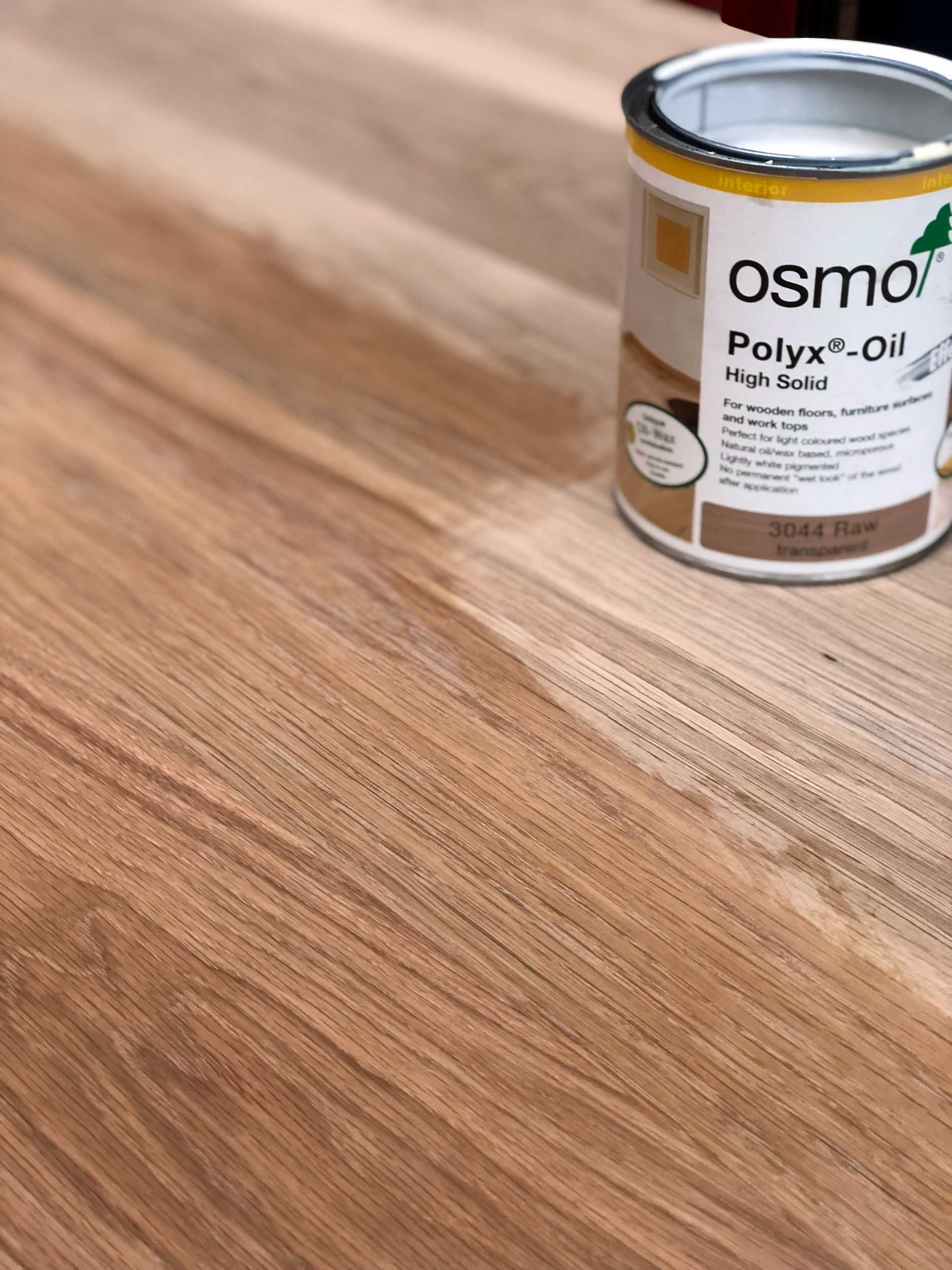
Natural Oak Table Top Finished in Hard Wax Oil, Image by Grain and Frame
Wood Oil
Wood oils are also another option to consider when it comes to your table finish. They do a great job of protecting your table, whilst still maintaining the natural feel and texture of the wood. Wood oils are also great at enhancing the natural colour of the wood whilst protecting against spillages and general use. It's important to note that for tables with a wood oil finish, frequent reapplication is required, especially if the table is regularly used. However, the good news is this is fairly easy to do yourself at home – read our guide on maintaining your table here. Overall, wax oils are a great option for those who want to enhance the natural beauty of the wood, but they can start to fade and typically need topping up every 12 months, depending on usage.

American Walnut Table Top Finished in Danish Oil, Image by Grain and Frame
Wax
Wax finishes have been around for centuries and for many years was seen as the 'go-to' finish for tables. Wax can really enhance the grain found in the wood and is especially great for filling in any voids in reclaimed wood. Tables that have been finished with wax can easily be repaired and maintained, however, this does require frequent re-application of the wax. Tables with a wax finish will require the most upkeep and will need to be waxed every 6 months to ensure the wood remains protected. Click here for our recommendations on the best wax to use on your wooden furniture.
Hard Wax Oil
A hard-wearing alternative to wax and oil, is hard wax oil. A blend of both solid waxes and oil, hard wax oils are extremely tough and offer a more durable finish than wax or oil alone. This finish is very easy to apply, maintain, and importantly, repair if areas of the table become worn over time. Similar to oil, hard wax oil also maintains the natural look and feel of the wood, whilst providing a more durable barrier. As this finish is slightly more hardwearing, it can last up to 12 months before the finish needs re-applying.
The great thing about purchasing a solid wood dining table is that it's easy to refinish. Over time your table may start to look a little worn and a great way to give it a new lease of life is to refinish the tabletop – read more about resurfacing your tabletop here.

Natural Oak Table Top Finished in Hard Wax Oil, Image by Grain and Frame
Source: https://www.grainandframe.com/buying-guides/everything-you-should-know-before-buying-a-wooden-dining-table/

0 Komentar